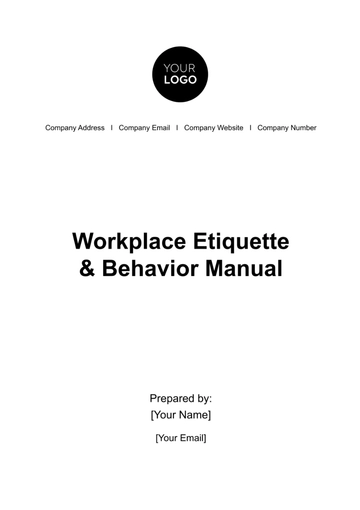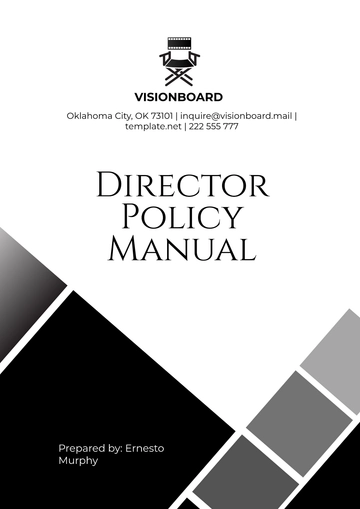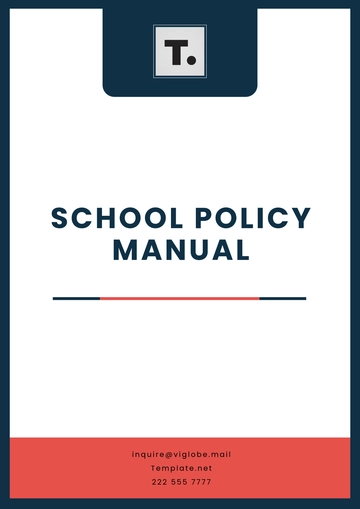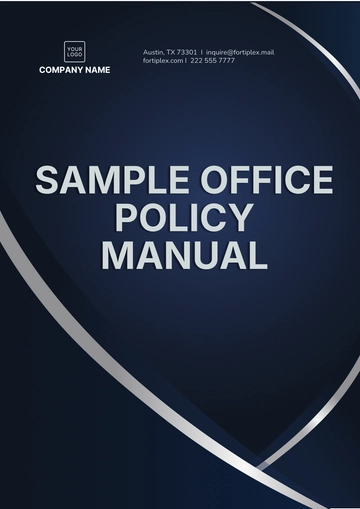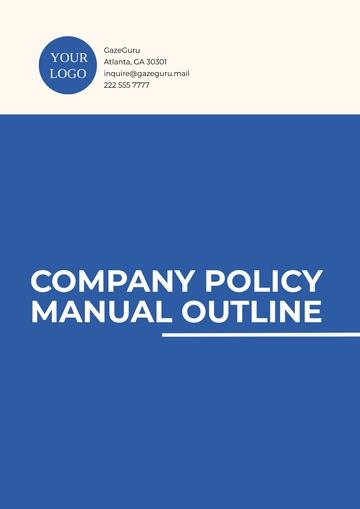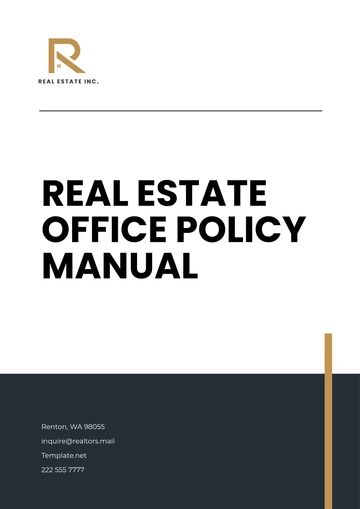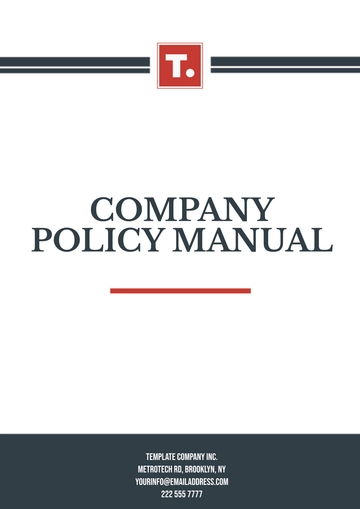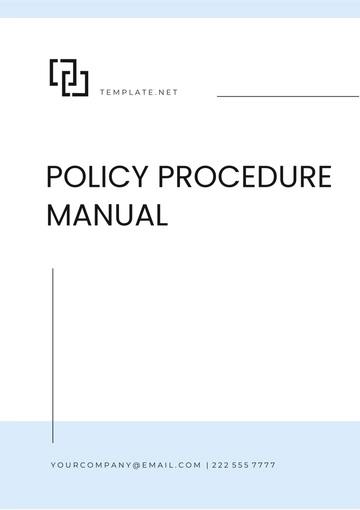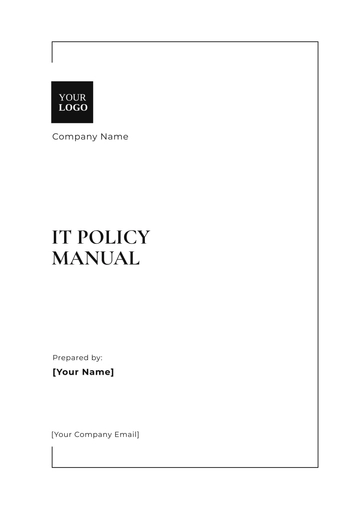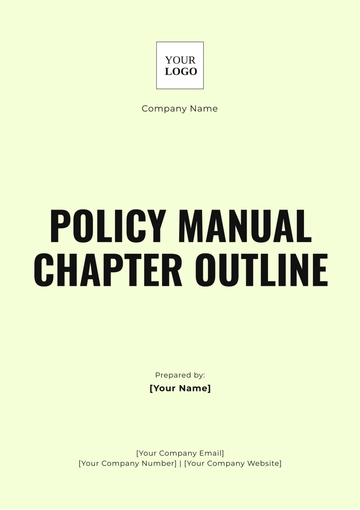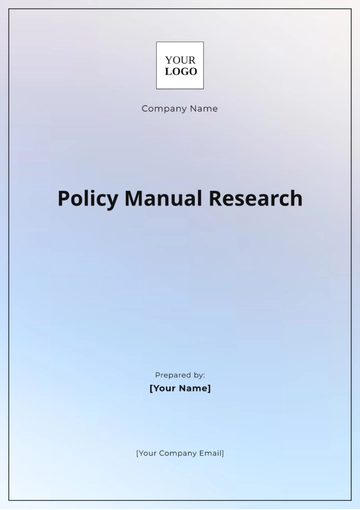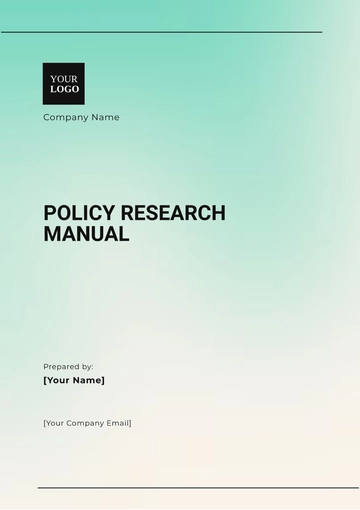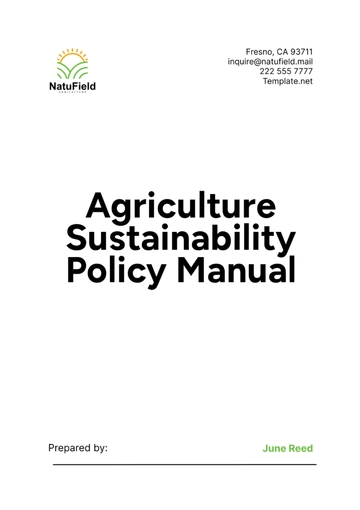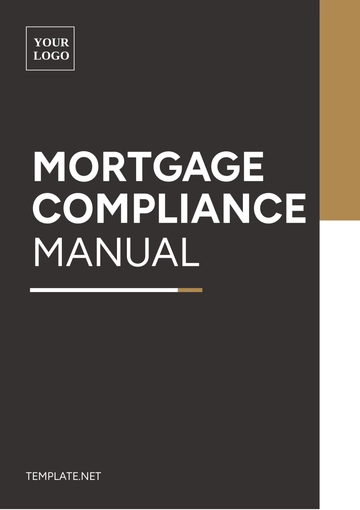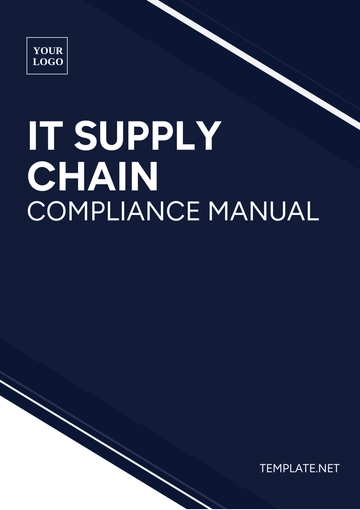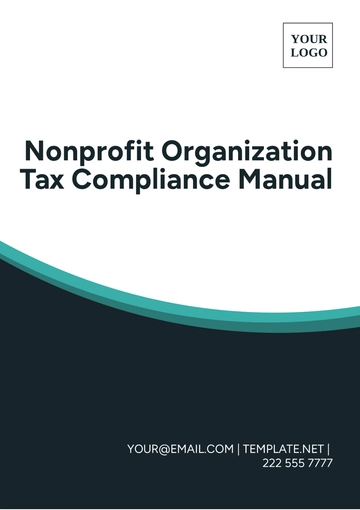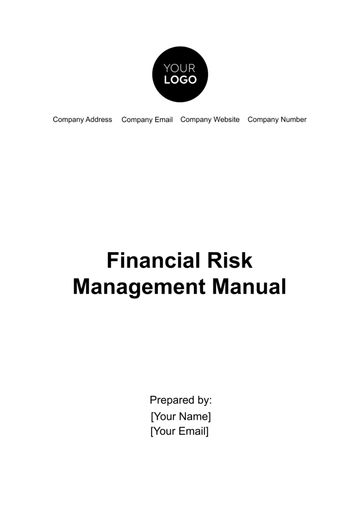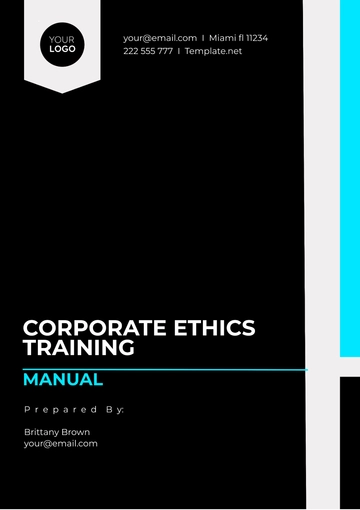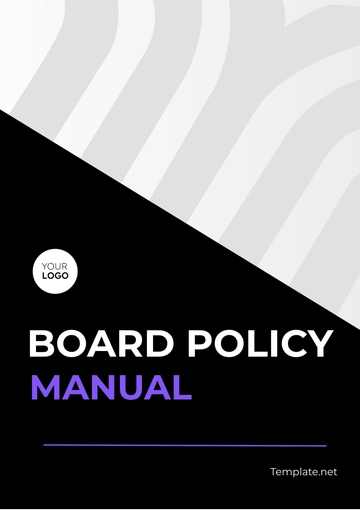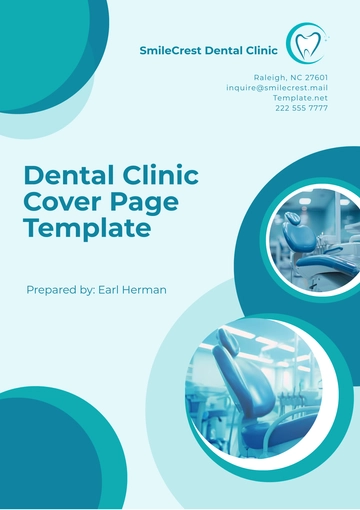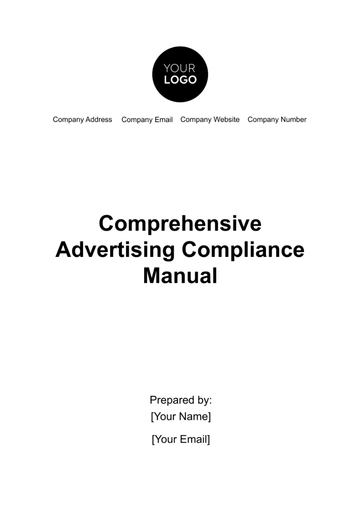Free Compliance Manual

Prepared by:
Name | Company Name | Department | Date |
|---|---|---|---|
[YOUR NAME] | [YOUR COMPANY NAME] | [YOUR DEPARTMENT] | [DATE] |
I. Introduction
The [YOUR COMPANY NAME] Compliance Manual serves as a comprehensive guide outlining the principles, policies, and procedures to ensure adherence to regulatory standards and ethical practices within the organization. This manual is designed to provide [Your Department] personnel with clear directives and protocols to navigate the complexities of compliance effectively.
A. Purpose:
The primary objective of this manual is to establish a culture of compliance that fosters integrity, transparency, and accountability across all levels of the organization. By adhering to the guidelines outlined herein, employees can mitigate risks, uphold regulatory obligations, and uphold the reputation and credibility of[YOUR COMPANY NAME].
B. Scope:
This manual applies to all employees, contractors, and affiliates of [YOUR COMPANY NAME] involved in any capacity with the company's operations. It encompasses a wide range of compliance areas, including but not limited to legal regulations, industry standards, and internal policies.
II. Compliance Policies
A. Code of Conduct:
[YOUR COMPANY NAME]'s Code of Conduct outlines the ethical principles and behavioural expectations that all employees must adhere to in their professional conduct.
Key areas covered include conflicts of interest, confidentiality, anti-corruption, and respect for diversity and inclusion.
Violations of the Code of Conduct may result in disciplinary action, up to and including termination of employment.
B. Data Privacy:
Protecting the privacy and security of sensitive information is paramount at [YOUR COMPANY NAME].
This policy outlines the procedures for collecting, storing, and handling personal and confidential data in compliance with relevant data protection laws.
Employees are required to undergo regular training on data privacy best practices to ensure compliance and mitigate the risk of data breaches.
III. Regulatory Requirements
A. Legal Compliance:
[YOUR COMPANY NAME] is committed to complying with all applicable laws and regulations governing its operations.
This section provides an overview of key regulatory requirements relevant to the company's industry and geographical locations.
Regular updates and reviews of legal requirements are conducted to ensure ongoing compliance and mitigate legal risks.
B. Industry Standards:
In addition to legal obligations, [YOUR COMPANY NAME] adheres to industry-specific standards and guidelines.
This includes certifications, accreditations, and industry best practices that govern quality, safety, and environmental sustainability.
Compliance with industry standards not only enhances the company's reputation but also fosters trust and confidence among stakeholders.
IV. Compliance Procedures
A. Risk Assessment:
[YOUR COMPANY NAME] conducts regular risk assessments to identify, evaluate, and mitigate potential compliance risks.
This process involves assessing internal controls, monitoring external developments, and analysing emerging trends.
Risk mitigation strategies are implemented to address identified risks and prevent non-compliance incidents.
B. Incident Reporting:
Prompt reporting of compliance incidents is essential for effective risk management and resolution.
This section outlines the procedures for reporting violations, suspicions of misconduct, or other compliance-related issues.
Employees are encouraged to report incidents through designated channels while ensuring confidentiality and protection from retaliation.
V. Training and Education
A. Compliance Training:
[YOUR COMPANY NAME] provides comprehensive training programs to educate employees on compliance policies and procedures.
New hires receive initial training upon joining the company, with ongoing training sessions conducted regularly for all employees.
Training materials are regularly updated to reflect changes in regulations and emerging compliance issues.
B. Awareness Campaigns:
In addition to formal training, [YOUR COMPANY NAME] conducts awareness campaigns to promote a culture of compliance.
These campaigns utilize various communication channels, such as emails, newsletters, posters, and intranet announcements.
By raising awareness and reinforcing compliance expectations, employees are empowered to make ethical decisions in their daily activities.
VI. Reporting and Monitoring
A. Compliance Monitoring:
[YOUR COMPANY NAME] implements robust monitoring mechanisms to track compliance performance and detect potential violations.
This includes regular audits, reviews, and assessments conducted by internal compliance teams or external auditors.
Monitoring findings are reported to management for corrective action and continuous improvement.
B. Whistle blower Protection:
[YOUR COMPANY NAME] is committed to protecting whistle blowers who report compliance concerns in good faith.
This policy prohibits retaliation against individuals who report violations or cooperate with compliance investigations.
Confidential channels are available for employees to report concerns anonymously, ensuring their safety and privacy.
VII. Enforcement
A. Disciplinary Action:
Non-compliance with [YOUR COMPANY NAME]'s policies and procedures may result in disciplinary action.
The severity of disciplinary measures depends on the nature and impact of the violation, ranging from warnings to termination of employment.
Consistent enforcement of disciplinary measures demonstrates [Your Company Name]'s commitment to upholding compliance standards.
B. Continuous Improvement:
Compliance is an ongoing process that requires continuous monitoring, evaluation, and improvement.
[YOUR COMPANY NAME] regularly reviews its compliance program to identify areas for enhancement and refinement.
Feedback from employees, regulators, and other stakeholders is solicited to inform improvement initiatives and ensure the effectiveness of the compliance program.
VIII. Conclusion
The [YOUR COMPANY NAME] Compliance Manual serves as a comprehensive resource for guiding employees in upholding compliance standards and ethical principles. By adhering to the policies, procedures, and best practices outlined herein, employees contribute to the company's success while maintaining integrity and trust with stakeholders.
- 100% Customizable, free editor
- Access 1 Million+ Templates, photo’s & graphics
- Download or share as a template
- Click and replace photos, graphics, text, backgrounds
- Resize, crop, AI write & more
- Access advanced editor
Discover the ultimate solution for comprehensive compliance management with the Compliance Manual Template from Template.net. This editable and customizable template ensures seamless adaptation to your organization's needs. Easily modify and tailor content with our intuitive Ai Editor Tool. Streamline compliance processes effortlessly.


